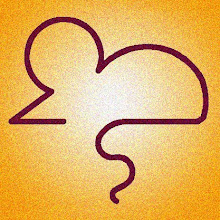
Below is the reverse of that model. Taking notes like this makes future casting much easier to plan, this one shows I used 45ml of resin, that it weighs 44g and that I used no filler. I planned to use filler on future copies (filler is powdered marble and reduces the curing temperature slowing it down so the model doesn't shrink so much) but as it makes the mixture cloudy (it's clear and slightly straw-coloured before curing) it makes bubble-checking more difficult, and I've not found any shrinkage issues so far so may not go that way.
This is the second copy I took from the mold, this one has no faults in it (apart from a bit of fluff that made it's way into the mix) which proved that the first "reference model" was in fact very effective. I'm so pleased that I can get a bubble-free copy of this awkward and challenging sculpture!
 Below is the 4th copy I took from the mold. I was curious to see how the model would look with just the inner circle of the base, as I felt that balanced with the horses well. I am very pleased with the composition of this finished casting, so will be aiming to produce copies like this for the actual run (and the RESS competition). The thinner parts of this model are under 1mm think, but I feel the resin is strong enough to carry them, and should any copy ever be damaged it would actually be quite easy to remove the thin circle completely, and the model could be saved.
Below is the 4th copy I took from the mold. I was curious to see how the model would look with just the inner circle of the base, as I felt that balanced with the horses well. I am very pleased with the composition of this finished casting, so will be aiming to produce copies like this for the actual run (and the RESS competition). The thinner parts of this model are under 1mm think, but I feel the resin is strong enough to carry them, and should any copy ever be damaged it would actually be quite easy to remove the thin circle completely, and the model could be saved.

Finally, this is the 5th copy I got from the mold, I decided to experiment and see how bronze would act in PU (polyurethane) resin - I've always used PE (polyester) resin for Bronze casting but was advised that using PU resin would be ok. I did start to polish it up, you can see the beginnings of the shiny polished bronze on the lower horse's nose.
This is the back view of the same Bronze model. As you can see it is almost white - this is because bronze is much heavier than resin, so it quickly sinks. This gives a good colour to the front surface of the model, but does make the rear surfaces quite ugly - you can see the ear of one of the horses in this picture, and the rear surface of that is almost white too. When I started polishing the rest of this model a few issues arose with the finish too, so all in all I don't feel this method is a success, and I will be reverting back to using PE resin for all metals in the future.
You can see the notes on the back of this one too, I was conservative with the bronze on this test copy and used just 10ml by volume. Now 10ml of Bronze weighs over 100g so if that was measured by weight the mix would actually be under 40g of resin to over 100g of Bronze (which is 2:5 resin:bronze ratio by weight), normally I would use around 160g with a model of this size (1:4 resin:bronze ratio by weight!) but I don't feel that would have helped with the state of this one using the PU resin.






1 comment:
Kelly, this is absolutely beautiful! I'm breathless! I'm also fascinated by all your notes about casting.
Niroot
Post a Comment